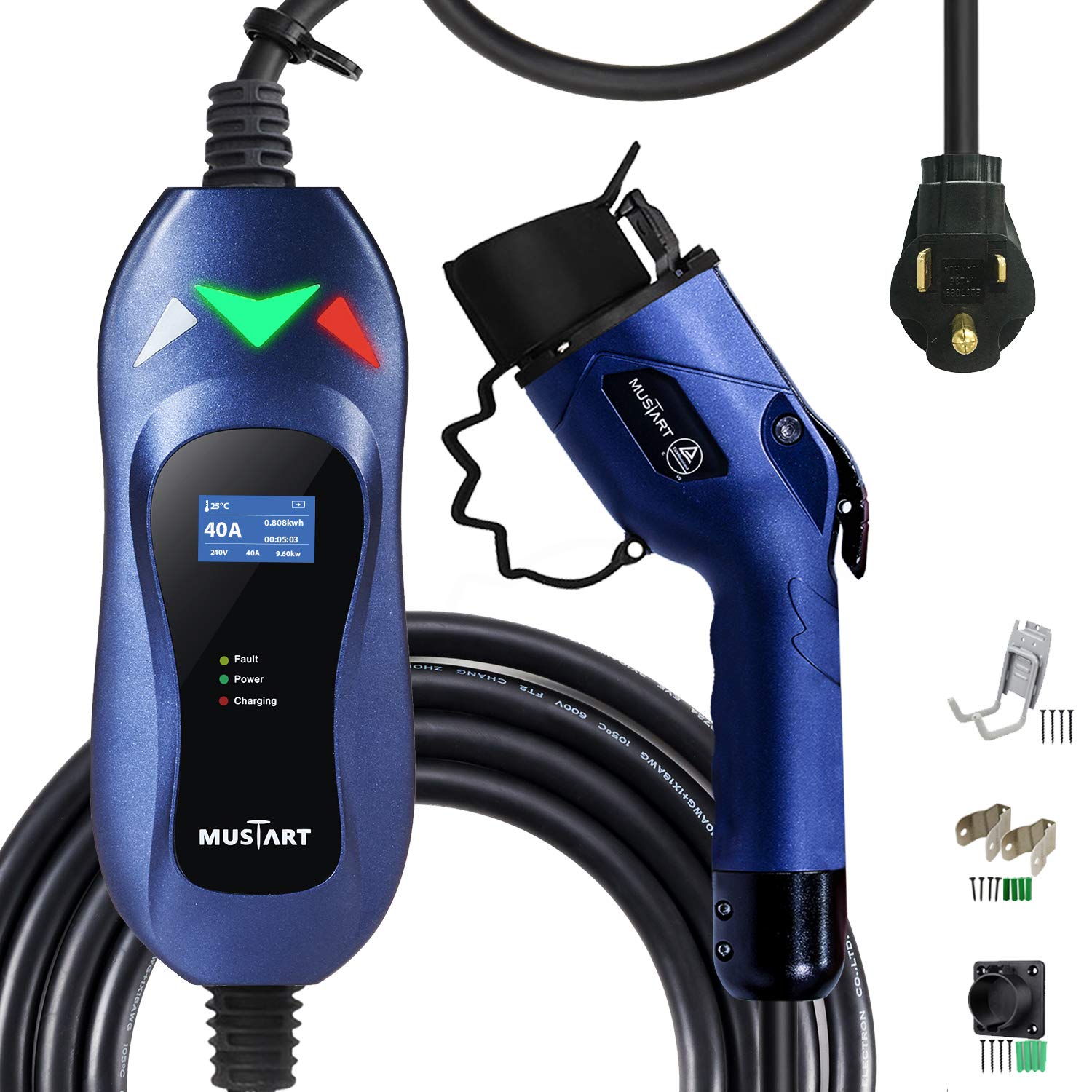Thinking about installing an EV charger at home? Smart move. A home charging station gives you control, convenience, and reliable access to power—no more searching for public stations or waiting in line.
But before you plug anything in, there are a few key things you need to figure out first.
1. Choose the Right Location
Garage or driveway?
Most people install their charger in the garage for protection from the elements. But if you don’t have a garage, no problem—just make sure the charger you buy is rated for outdoor use.
The Mustart Level 2 EV Charger, for example, is weather-resistant and built to handle a wide range of temperatures. Whether it’s blazing hot or freezing cold, it’ll keep charging.
Also consider:
- How far your charger will be from your car’s port
- Whether the cable will reach comfortably (look for options with 25-foot cables for max flexibility)
- How close the charger is to a power source
2. Understand Your Power Setup
Most Level 2 chargers, like the Mustart, run on a 240V outlet. If your home doesn’t already have one, you’ll need to get one installed.
Here’s what to check:
- Do you have a NEMA 6-50 outlet? That’s the standard plug for many home chargers.
- What’s your electrical panel’s capacity? A 50-amp breaker is typically recommended, and your panel should be rated at 100 amps minimum.
3. Hire a Certified Electrician
This isn’t a DIY weekend project unless you’re already a licensed electrician. A pro will:
- Install the correct outlet (if needed)
- Make sure your panel can handle the extra load
- Ensure everything’s safe and up to code
Hiring someone now saves you from electrical headaches later.
4. Hardwired or Plug-In?
Most EV chargers offer both options:
- Plug-in units are easier to install and can be moved or replaced without hassle.
- Hardwired chargers are more permanent and may offer better long-term reliability in outdoor setups.
The Mustart Level 2 Charger comes ready with a NEMA 14-50 plug, perfect for homes with an existing 240V outlet.
5. Future-Proofing Your Setup
If you think there’s a chance your household will own two EVs down the line, plan for it now.
You don’t need to install two chargers today—but leave room on your electrical panel, and maybe even install a second outlet while your electrician’s there. It’ll save time and money later.
6. Smart Features (If You Want Them)
Some chargers offer app control, scheduling, and usage tracking. These features let you:
- Charge during off-peak hours to save on electricity
- Monitor charging remotely
- See how much power you're using
If you’re into that kind of control, be sure to pick a unit with Wi-Fi and app support.
Home EV Charging: The Bottom Line
Setting up an EV charging station at home is one of the smartest upgrades you can make as an EV owner. But it pays to do a little planning up front.
To recap, here’s your quick checklist:
- ✅ Choose a spot with easy car access
- ✅ Make sure the cable will reach your car’s port
- ✅ Check for or install a 240V outlet (NEMA 6-50 or 14-50)
- ✅ Confirm your electrical panel can handle it
- ✅ Hire a licensed electrician
- ✅ Pick a charger that fits your current and future needs
Whether you want plug-and-play or a more advanced solution, the Mustart Level 2 EV Charger is a solid pick for most homes. It’s powerful, weatherproof, and built for daily use.
Ready to get started?
Install your charger right the first time—and make home charging fast, safe, and effortless.
Mustart 48 Amp Smart EV Charger
Simplify your home EV charging experience with the Mustart 48. Offering fast charging capabilities and a user-friendly mobile app, this charger ensures your electric vehicle is always charged and ready. Adjustable amperage simplifies installation and maximizes charging speed from your home’s existing electrical.


